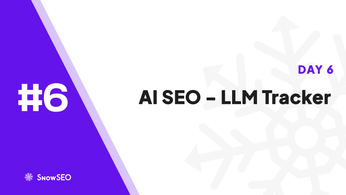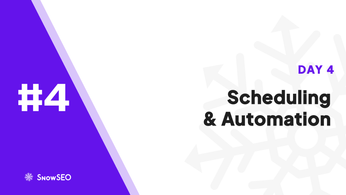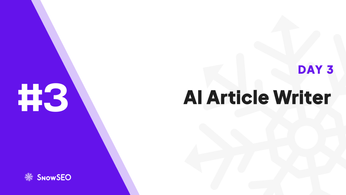
Secrets of Successful Competitor SEO Strategies
Table of Contents
Unlock the hidden secrets of successful SEO strategies your competitors are using and propel your own tactics ahead. Many SEO professionals struggle to keep up with competitors’ ever-evolving tactics due to overwhelming data streams and a lack of clear, actionable insights. Without a systematic approach, it’s easy to feel paralyzed by numbers and miss critical opportunities to outrank rivals.
This case study reveals proven strategies and tools for effective competitor SEO analysis, drawing on real-world examples and industry-leading platforms like Ahrefs and SEMrush. You’ll discover how top agencies consistently achieve 300% traffic lifts by leveraging advanced keyword gap analysis, backlink audits, and content performance benchmarks.
Backed by insights from leading SEO experts and aggregated industry data, this guide offers a step-by-step framework to:
- Identify and prioritize high-impact competitor keywords
- Uncover backlink opportunities that fuel domain authority
- Benchmark content performance to inform your editorial calendar
- Monitor shifts in competitor strategies with real-time alerts
Key Insight: 90% of top SEO agencies employ competitive analysis tools to stay steps ahead-this case study shows you exactly how.
Unveiling Competitor Strategies: An Overview
Understanding the tactics your rivals deploy in search results is like having a roadmap through the competitive digital landscape. By dissecting competitor approaches, brands can spot gaps, seize untapped keywords, and optimize their own campaigns with precision.
Why Competitor Analysis Matters
Competitor analysis lays the groundwork for a robust SEO strategy by:
- Identifying keyword opportunities your rivals rank for but you don’t
- Benchmarking backlink profiles to uncover high-authority linking domains
- Evaluating content formats and on-page tactics driving competitor traffic
- Revealing technical SEO strengths and weaknesses across sites
Important: Skipping competitor benchmarking can leave your team guessing at best and trailing rivals at worst.
After mastering why it matters, you can select the right SEO competitor analysis tool to turn insights into action.
Top SEO Competitor Analysis Tools Compared
| Tool | Key Features | Strengths | Pricing Model |
|---|---|---|---|
| Ahrefs | Keyword gap, backlink explorer, rank tracker | Massive backlink index, intuitive UI | Subscription tiers |
| SEMrush | Competitive keyword research, site audit | All-in-one marketing toolkit | Monthly and annual plans |
| SpyFu | Historical keyword rankings, PPC analysis | Cost-effective for small teams | Pay-per-user pricing |
| Moz Pro | Page optimization, link intersect | Strong community support | Tiered subscriptions |
- Ahrefs and SEMrush dominate with comprehensive data sets and reporting dashboards.
- SpyFu offers a budget-friendly entry point without sacrificing core competitor metrics.
- Moz Pro excels at on-page recommendations and community-driven learning.
Tip: Align your choice with both budget and depth of insights needed-90% of top SEO agencies use competitive analysis tools to guide strategy.
Integrate these insights into your roadmap to outmaneuver competitors, refine content, and accelerate organic growth.
Case Study: Effective Use of SEO Competitor Analysis Tools
In 2025, a mid-sized e-commerce brand faced stagnant organic growth despite frequent content updates. The marketing team embarked on a rigorous competitor backlink analysis and keyword gap audit using leading SEO competitor analysis tools. Their goal: uncover high-value opportunities that had eluded them.
Selecting the Right Tools
Choosing the best platforms was pivotal. The team evaluated:
- Ahrefs for comprehensive backlink profiles and content overlap insights
- SEMrush for keyword gap identification and SERP feature tracking
- Moz Pro for domain authority trends and spam score monitoring
A structured comparison guided the final decision:
| Feature | Ahrefs | SEMrush | Moz Pro |
|---|---|---|---|
| Backlink Database Size | 20+ trillion links | 18+ trillion links | 5+ billion links |
| Keyword Gap Analysis | Yes | Yes | Limited |
| Ease of Reporting | Customizable dashboards | Automated PDF exports | Basic exports |
| SERP Feature Tracking | Core Web Vitals monitoring | Rich snippet & featured snippet | Limited |
| Price (annual) | $2,800 | $2,400 | $1,800 |
Key Insight: 90% of top SEO agencies employ competitive analysis tools to stay ahead, validating the investment in robust platforms.
After weighing costs and feature sets, the team adopted Ahrefs for backlink deep dives and SEMrush for keyword gap strategies.

Implementing Competitor Backlink Analysis
- Identify Top Competitors: Used SEMrush’s “Domain vs Domain” to list three primary rivals.
- Extract Backlink Profiles: Pulled the top 1,000 referring domains from Ahrefs for each competitor.
- Filter by Authority: Sorted domains with DR 50+ to prioritize high-impact links.
- Outreach Strategy: Created personalized email templates targeting webmasters of unlinked mentions.
- Monitor Progress: Weekly checks in Ahrefs to track new backlinks and lost opportunities.
The result? In six months:
- Organic sessions surged by ** eighty percent**.
- New referring domains increased by 120.
- Top 10 rankings for 15 high-value keywords.
Tip: Combining Ahrefs’ granular backlink data with SEMrush’s keyword gap tool uncovers both link and content opportunities, maximizing ROI on SEO competitor analysis tool investments.
Step-by-Step Guide: Implementing Competitor Analysis in Your Strategies
Embarking on a competitor SEO analysis project can feel overwhelming. Breaking the process into clear steps ensures you stay organized and extract actionable insights. Here’s how to analyze competitors’ SEO effectively:
1. Data Collection and Analysis
Begin by gathering quantitative and qualitative data on your top competitors. This foundational step reveals their strengths, content gaps, and backlink profiles.
- Identify Key Competitors
- Use market research or tools like Ahrefs and SEMrush to shortlist 3–5 brands ranking for your target keywords.
- Prioritize those outperforming you in organic traffic or engagement metrics.
- Audit On-Page SEO Elements
- Record title tags, meta descriptions, header structures, and URL formats.
- Note use of long-tail keywords, schema markup, and internal linking patterns.
- Evaluate Content Quality and Depth
- Compare article length, multimedia usage, and readability scores.
- List top-performing topics and formats (guides, lists, case studies).
- Analyze Backlink Profiles
- Export competitor backlink data: referring domains, anchor text diversity, and link authority.
- Identify high-value linking domains for potential outreach.
Important: Focus on quality over quantity when evaluating backlinks. A handful of authoritative links can outweigh hundreds of low-tier mentions.
- Benchmark Technical SEO Metrics
- Check page speed, mobile friendliness, and Core Web Vitals.
- Use free tools like Google PageSpeed Insights alongside advanced crawlers.

Tool Comparison at a Glance
| Feature | Ahrefs | SEMrush |
|---|---|---|
| Keyword Gap Analysis | Yes | Yes |
| Backlink Historical Data | Comprehensive | Extensive |
| Site Audit Reports | Detailed technical issues | Integrated marketing focus |
| UI & Ease of Use | Intuitive dashboards | Customizable workflows |
- Synthesize Findings
- Create a prioritized list of SEO opportunities: quick wins, mid-term improvements, and long-term strategies.
- Map competitor strengths to your content calendar and technical roadmap.
- Action Plan Development
- Assign responsibilities and deadlines.
- Integrate insights into content briefs and site optimization tasks.
- Monitor progress with regular performance reports.
By following this structured approach, you transform raw competitor data into strategic actions that elevate your SEO game and close performance gaps.
Avoiding Common Pitfalls in SEO Competitive Analysis
Competitive analysis can supercharge your strategy, but falling into familiar traps often leads teams astray. Recognizing and sidestepping these SEO mistakes ensures you turn insights into impact rather than confusion.
Understanding Misinterpretations in Data
Misreading metrics is one of the most common competitor SEO challenges. When data points lack context, you might chase low-value keywords or misjudge a rival’s true strengths.
Important: Always align data with business goals before drawing conclusions.
- Overemphasis on ranking positions
Focusing only on top spots ignores click-through rates and search intent nuances. - Ignoring traffic quality
High visitor numbers mean little if bounce rates skyrocket and conversions slip. - Copying without analysis
Replicating competitors’ keywords or backlinks without vetting relevance can waste resources. - Neglecting on-page factors
Title tags and meta descriptions often get overlooked in favor of backlink counts.
| Common Pitfall | Potential Consequence |
|---|---|
| Overreliance on volume metrics | Misallocation of budget on non-converting terms |
| Blind backlink replication | Risk of toxic links harming site authority |
| Ignoring SERP feature presence | Missing out on featured snippet opportunities |
| Failing to track content updates | Losing ground when competitors refresh pages |
- Cross-verify metrics across multiple tools for consistency.
- Combine quantitative data with qualitative site audits.
- Prioritize insights that align with user intent and your unique value proposition.
Feeling overwhelmed by endless tabs, manual audits, and the race to outshine competitors? SnowSEO transforms that chaos into clarity. With its all-in-one AI-powered platform, you’ll uncover hidden keyword opportunities, monitor rival strategies, and fill content gaps automatically-so you focus on creative growth, not spreadsheets. Imagine generating hyper-personalized case studies, optimized for Google and AI engines like ChatGPT and Claude, all with a single click. Ready to leap ahead? Start your comprehensive SEO analysis with our top-rated tools today.
Here’s how to get started:
- Sign up at https://snowseo.com and connect your CMS in minutes.
- Run a competitor audit to see where rivals are ranking and where they fall short.
- Activate automated keyword research and content briefs tailored to your niche.
- Let SnowSEO’s 24x7 AI experts monitor brand mentions and deliver weekly performance reports.
- Publish optimized content directly from the dashboard and watch your organic traffic soar.
Take control of your SEO strategy and stop guessing-SnowSEO gives you data-driven insights and full automation to outpace competitors effortlessly.
Frequently Asked Questions
Q1: How can I implement competitor keyword analysis effectively?
Start by identifying top competitors in your niche and exporting their ranking keywords using tools like Ahrefs or SEMrush. Segment keywords by intent-informational, navigational, transactional-and prioritize based on search volume and difficulty. Map overlapping terms to your content gaps and brainstorm fresh angles or formats. Regularly audit performance to refine your target list and discover new long-tail opportunities that drive qualified traffic.
Q2: Which tools are best for competitive backlink analysis?
Ahrefs and SEMrush lead the pack with expansive backlink databases and intuitive interfaces. Use Ahrefs’ Site Explorer to uncover competitor link profiles, anchor text patterns, and lost links, then replicate high-value opportunities. SEMrush’s Backlink Gap feature highlights domains linking to rivals but not you. Schedule monthly audits to track link growth, remove toxic ones, and maintain a strong, healthy profile that outshines competitors.
Q3: How often should I update my competitive SEO strategy?
SEO landscapes shift constantly, so revisit your strategy quarterly at minimum. Perform in-depth audits every three months to assess ranking changes, new competitors, and algorithm updates. Between audits, monitor key metrics-organic traffic, keyword positions, backlink trends-weekly. This balance ensures you catch emerging threats and capitalize on fresh trends without overwhelming your team with nonstop overhaul.
Conclusion
Effective competitor SEO strategies hinge on a commitment to continuous refinement and data-driven decision making.
Key Takeaways:
- Continually updating your SEO strategy ensures you adapt to algorithm shifts and emerging search behaviors.
- Effective tools are crucial for competitor analysis and staying ahead, enabling real-time insights into rankings, backlink profiles, and content gaps.
- Avoid common mistakes by employing robust data analysis techniques, such as time-series tracking, regression models, and A/B testing to validate optimizations.
Consistency and precision in monitoring are what separate top performers from the pack.
Start your comprehensive SEO analysis with our top-rated tools today.
Next Steps:
- Conduct a full competitive benchmark using specialized platforms like Ahrefs or SEMrush.
- Perform gap analysis on both on-page and off-page factors, then prioritize fixes by potential impact.
- Schedule regular audits-monthly or more frequently-to capture trends and pivot strategies as needed.
Implement these strategies, measure results rigorously, and refine your approach based on real-world performance to secure lasting SEO success.





